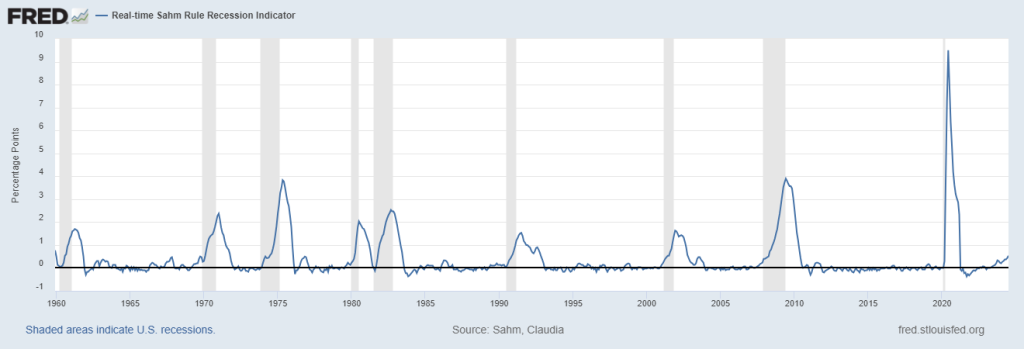It only took moments for Friday’s disappointing U.S. jobs report to stoke fears that a recession could be in the offing. In the wake of the report, Treasury yields took a dive while the Dow, S&P 500 and Nasdaq all faced a selloff, pushing them down more than 2% early in the afternoon.
Employers added only 114,000 jobs in July, according to data released Friday, Aug. 2, by the Bureau of Labor Statistics. That number missed economists’ expectations of 175,000. Meanwhile, the unemployment rate in July ticked up to 4.3% from 4.1% in June. July marked the fourth straight month the unemployment rate rose and it is at its highest level since October 2021.
“I don’t think that this report tells us that we’re headed for recession,” former Acting and Deputy Labor Secretary Seth Harris told Straight Arrow News Friday. “The GDP [gross domestic product] numbers don’t give us any indication that we’re headed for recession. The second quarter GDP numbers were good, solid numbers; not booming, but very good for this deep into a growth cycle in the United States.”
Real GDP is estimated to have risen by 2.8% year over year, according to the “advance” estimate released by the Bureau of Economic Analysis. The official number will be released on Aug. 29.
The Sahm Rule
These latest recession fears come from what is known as the Sahm rule, developed by economist Claudia Sahm. The rule states a recession in the U.S. has started when the three-month average of the unemployment rate crosses 0.5% or more from the previous year’s low.

Since 1953, the Sahm rule has been triggered 11 times. In 10 of those 11 cases, the economy was already in a recession. It was triggered Friday with July’s jobs report.
“I agree with Claudia about Claudia’s rule, and that is that it can be a little bit too pessimistic, particularly when you are at, historically, very, very low unemployment rates,” Harris said, referencing Sahm’s own contention that the rule could be overstated in this instance due to labor market behavior from the COVID-19 pandemic and an increase in immigration.
“We’ve seen that we had a period of more than two years of unemployment rates below 4%,” Harris told SAN. “That’s the longest period we’ve had that low [of] unemployment since the 1960s. But it shows us that our economy can be immensely successful with an unemployment rate that gets to and remains below 4%. That is where full employment begins.”
Meanwhile, Harris said movement in the markets due to an imminent recession is an “overreaction.”
“We’ve seen a meaningful sell off in equity markets around the world, not just in the United States, but certainly here in the United States over the course of the last several days, and a part of that is recession concerns, which is, in my view, a gross overreaction to what we’re seeing right now,” he said. “We certainly are not seeing numbers that suggest that a recession is imminent, or the recession is even an intermediate-term concern. It can be a longer-term concern, but I don’t think we can see it as an intermediate-term concern.”
However, Sahm herself, who stands by her statement that the U.S. is not currently in a recession despite triggering her rule, told Yahoo! Finance Friday that she is “very concerned” about a recession in the next three to six months.








